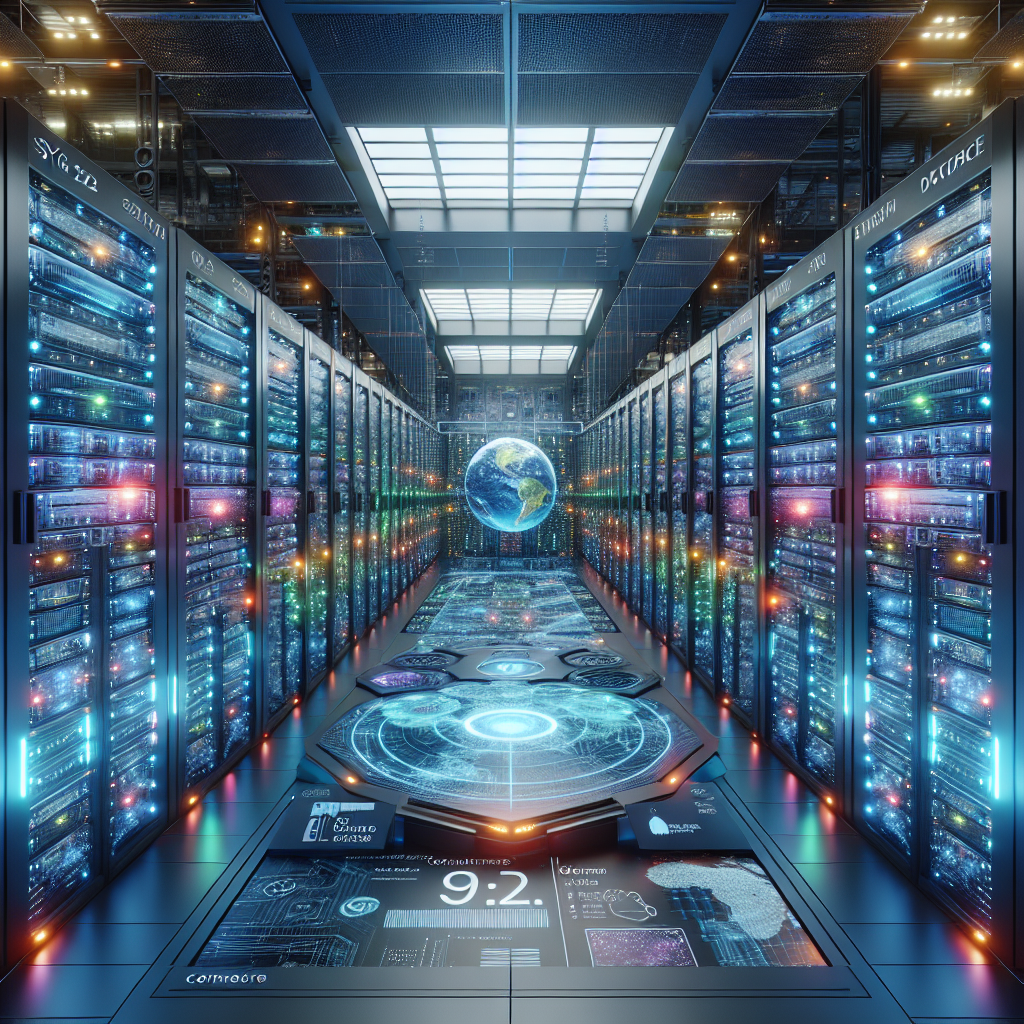AI Revolution Heats Up: OpenAI's $30B Oracle Deal, China's AI Alliances, and the Talent War - July 2025
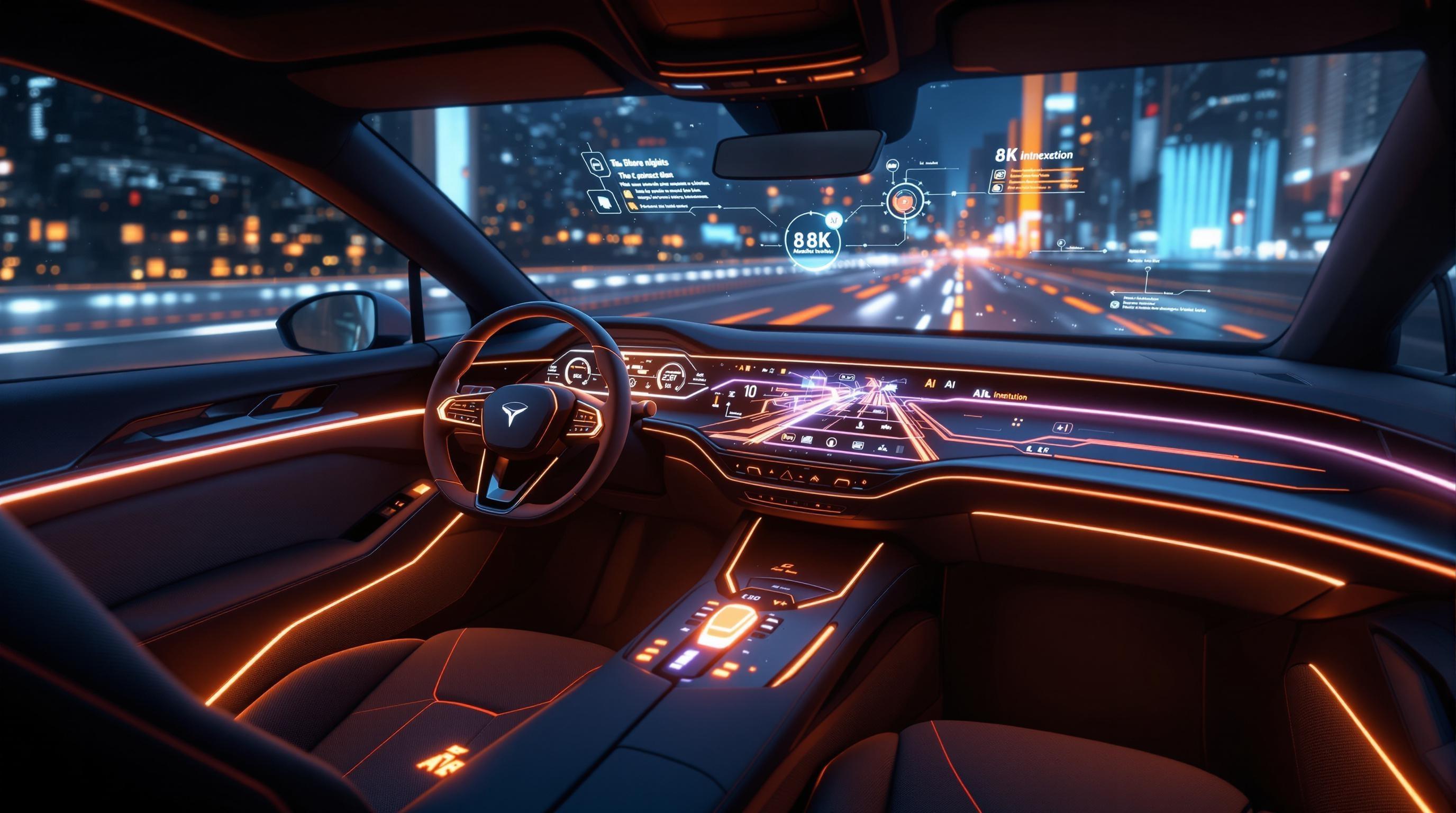
OpenAI's $30 billion deal with Oracle signals a shift towards AI giants controlling their own infrastructure, granting them greater control, security, and a competitive edge. To capitalize on this trend, explore options for optimizing your AI workloads and consider the long-term benefits of investing in dedicated AI infrastructure. Stay ahead by monitoring AI News and making informed decisions about your computational needs.
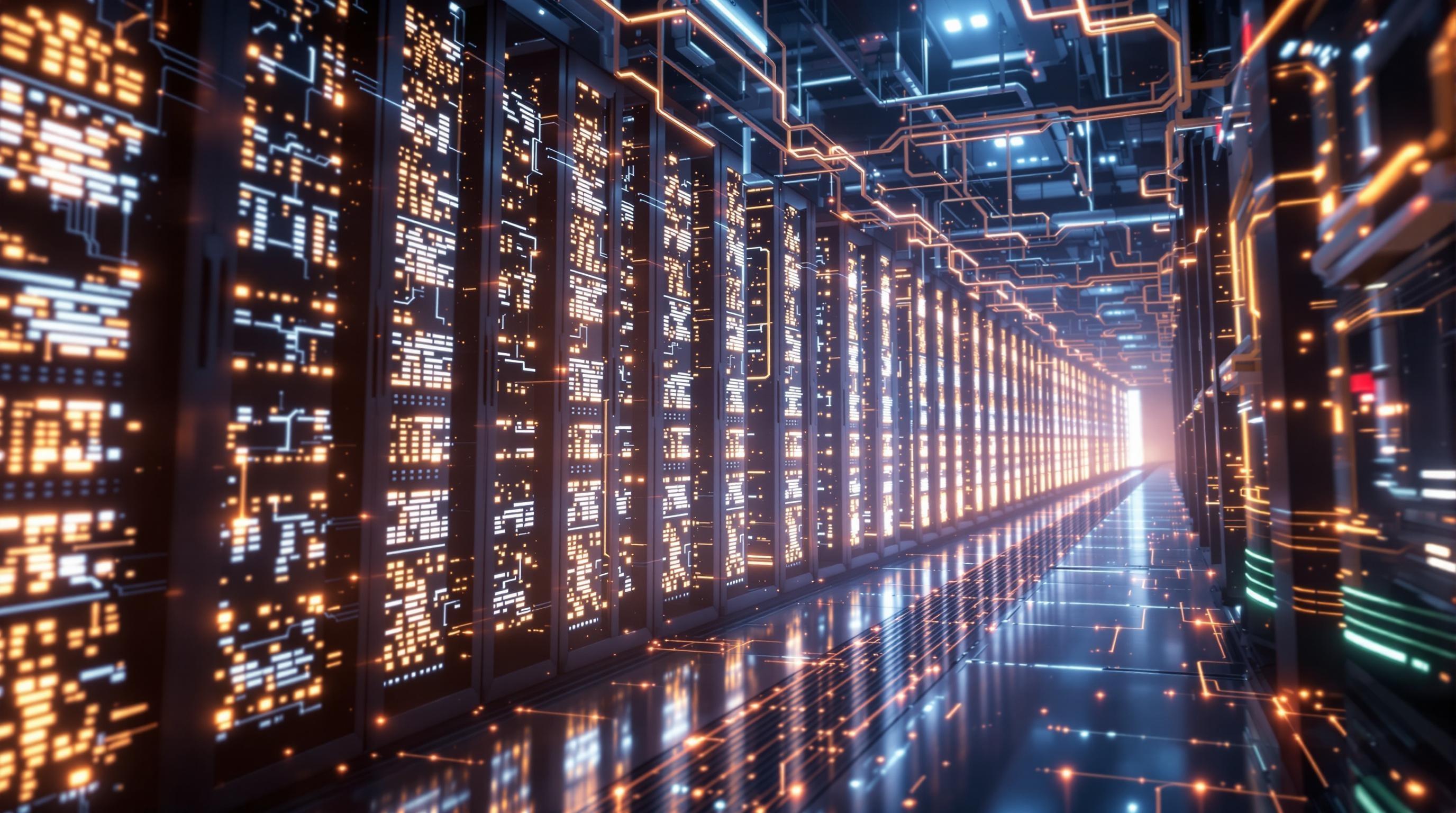
OpenAI's $30 Billion Oracle Deal and the Future of AI Infrastructure
The AI landscape is shifting beneath our feet, and one seismic event is OpenAI's audacious $30 billion deal with Oracle. This isn't just about renting server space; it's a strategic power play that signals a fundamental shift in how AI behemoths are approaching infrastructure.
Powering the Future: 4.5 Gigawatts and 2 Million AI Chips
This massive investment secures OpenAI access to a staggering 4.5 gigawatts of power. To put that into perspective, that's enough juice to power approximately two million AI chips. These chips are the lifeblood of modern AI, the processors that train and run the complex neural networks behind everything from ChatGPT, your favorite AI assistant, to cutting-edge image and video generation tools like Sora. It is a race to acquire the best infrastructure.
Securing this level of compute capacity is akin to cornering the market on oil during the industrial revolution – it's about controlling the engine of progress.
Project Stargate: A $500 Billion Bet on AI
This Oracle deal is inextricably linked to OpenAI's ambitious Stargate initiative, a mind-boggling $500 billion project aimed at building a network of AI supercomputers. While the price tag seems astronomical, it underscores the scale of ambition driving the current AI arms race. Stargate represents OpenAI's vision for a future where AI capabilities are limited only by the imagination, not by computational constraints. This partnership will help them compete with other AI models, such as Google Gemini.
Abilene, Texas: The Epicenter of AI Infrastructure
The first phase of this grand vision is already underway in Abilene, Texas. Construction crews are working tirelessly to erect the physical infrastructure that will house these AI powerhouses. Abilene is strategically located with access to abundant and relatively inexpensive power, making it an ideal location for such an energy-intensive undertaking. This location highlights a crucial but often overlooked aspect of AI development: the geopolitical importance of energy resources in the AI era.
From Tenant to Landlord: OpenAI's Infrastructure Ambitions
Historically, AI companies have relied on cloud providers like Amazon Web Services (AWS) and Microsoft Azure for their computing needs. However, OpenAI's move signals a desire to break free from this dependence and take control of its own destiny. This transition from tenant to landlord is driven by several factors:
Cost: Owning and operating their own infrastructure can potentially reduce long-term costs, especially given the immense scale of OpenAI's operations.
Control: Owning the infrastructure allows for greater control over hardware and software configurations, enabling OpenAI to optimize its systems for specific AI workloads.
Security: Direct control over data centers enhances security and reduces the risk of data breaches or unauthorized access.
Competitive Advantage: Owning cutting-edge AI infrastructure provides a significant competitive advantage, allowing OpenAI to innovate faster and push the boundaries of AI capabilities.
AI News is constantly changing and this deal is a sign of the future. It will be interesting to see how OpenAI's infrastructure plays out in the long run, and how it shifts the market as a whole. As OpenAI solidifies its control over compute infrastructure, the implications for the broader AI landscape are profound. Will this spark a trend among other AI giants, leading to a wave of infrastructure investments? The coming years will undoubtedly reveal the answers, shaping the future of AI development and deployment.
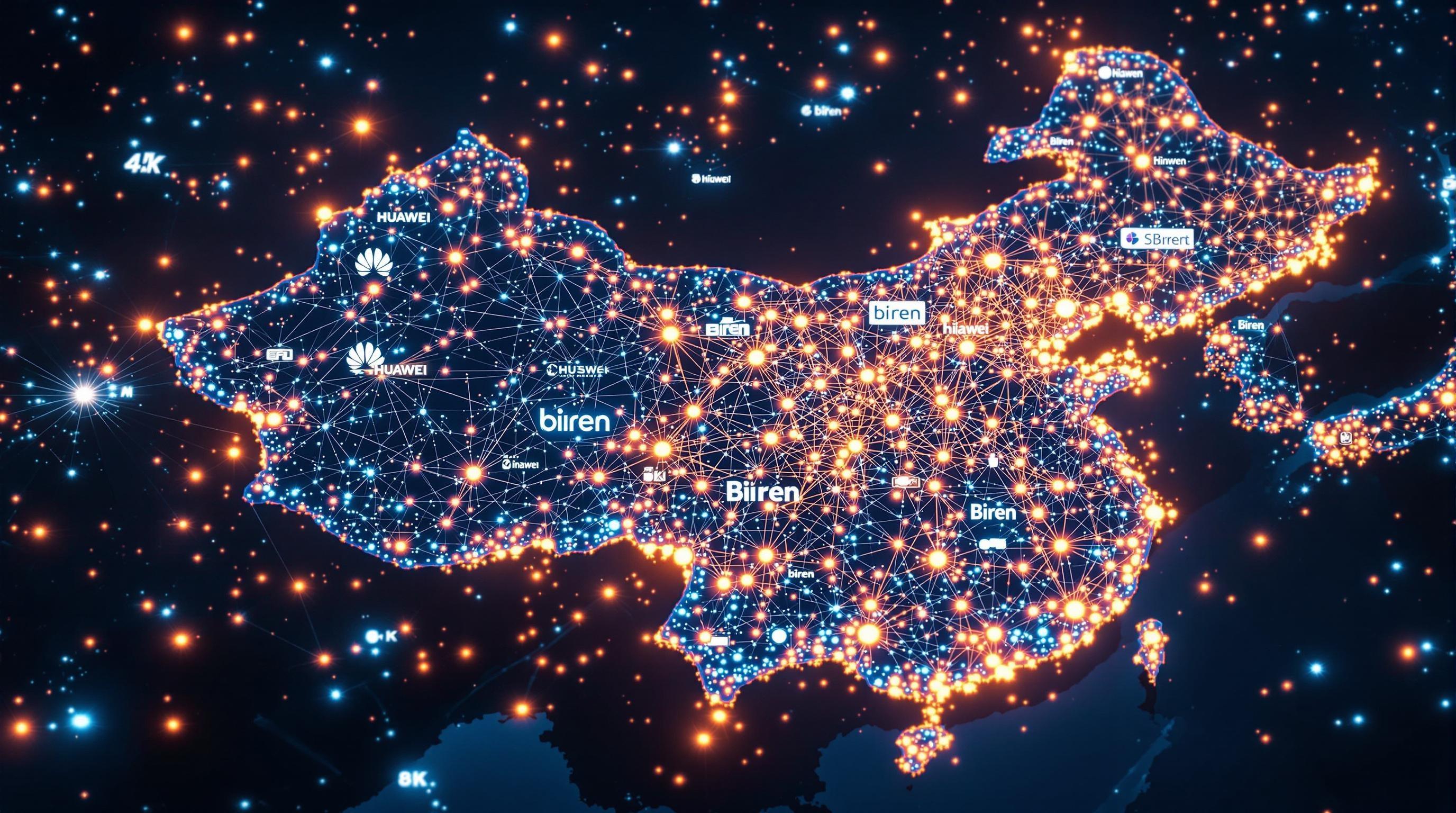
China's AI Ecosystem: Alliances Form Amid US Restrictions
The AI landscape in China is rapidly evolving, fueled by both ambition and necessity. Amid increasing restrictions on access to foreign technology, Chinese AI firms are forging strategic alliances to bolster their domestic capabilities and reduce reliance on international suppliers.
The Rise of Domestic Alliances
China's response to US sanctions has been the formation of powerful consortiums designed to foster innovation within its borders. A prime example is the "Model-Chip Ecosystem Innovation Alliance," a collaborative effort featuring major players like Huawei, Biren, and Moore Threads. This alliance aims to create a synergistic relationship between AI model development and chip manufacturing, ensuring that Chinese AI companies have access to the hardware and software needed to compete on a global scale.
This alliance represents a strategic shift towards self-sufficiency in AI, a critical move in light of ongoing geopolitical tensions.
Huawei's CloudMatrix 384: A Glimpse of Progress
Huawei, a central figure in China's tech ambitions, recently showcased its CloudMatrix 384 system, powered by its Ascend 910C chips. This system is designed to provide robust computing power for AI training and inference tasks. Huawei's increasing prominence in the AI chip market is a direct consequence of the challenges posed by US restrictions, forcing the company to innovate and develop its own alternatives.
Challenging Nvidia's Dominance
Interestingly, a report by SemiAnalysis suggests that Huawei's chips are outperforming Nvidia's GB200 NVL72 on certain metrics. While Nvidia remains a dominant force in the AI hardware space, these findings indicate that Chinese companies are making significant strides in closing the performance gap. This competition could potentially reshape the global AI landscape, offering new options and driving innovation.
To further understand the capabilities of these emerging technologies, you might explore resources on AI Fundamentals to grasp the core concepts behind AI chip design and performance.
The Impact of US Restrictions
The backdrop to these developments is the ongoing imposition of US restrictions on technology exports to China. These sanctions, intended to limit China's access to advanced AI chips and related technologies, have had a significant impact on the Chinese AI industry. However, rather than stifling innovation, these restrictions have spurred domestic companies to accelerate their research and development efforts and seek alternative solutions.
Increased R&D Spending: Chinese AI firms are investing heavily in research and development to create indigenous alternatives to foreign technology. This has led to breakthroughs in chip design, software development, and AI algorithms.
Greater Collaboration: The formation of alliances like the Model-Chip Ecosystem Innovation Alliance demonstrates a commitment to greater collaboration within the Chinese AI ecosystem. By pooling resources and expertise, these companies are better positioned to overcome technological barriers.
Policy Support: The Chinese government is providing strong policy support for the AI industry, including funding for research and development, tax incentives for domestic manufacturers, and regulatory frameworks that favor local companies.
Ultimately, the US restrictions have acted as a catalyst for China's AI ambitions, forcing the country to become more self-reliant and innovative. This shift has led to the emergence of new players and technologies, potentially reshaping the global AI landscape and prompting deeper exploration of resources like the AI Explorer.
As Chinese AI firms navigate these challenges, it's crucial to monitor how these alliances evolve and the impact they have on the broader AI landscape. The race for AI supremacy is far from over, and China's response to US restrictions is a key factor in shaping its future.

ChatGPT Agent: OpenAI's New Unified AI System for Research and Action
Imagine having an AI assistant that not only answers your questions but also proactively anticipates your needs and takes action on your behalf. That's the promise of ChatGPT Agent, OpenAI's ambitious new unified agentic system designed to streamline research and automate tasks.
The Fusion of Operator and Deep Research
ChatGPT Agent represents a significant leap forward by merging two core capabilities: Operator's website interaction and Deep Research's informational intelligence. Think of Operator as the hands and feet of the agent, capable of navigating websites, filling forms, and executing commands. Deep Research, on the other hand, acts as the brain, analyzing vast amounts of information, identifying trends, and synthesizing insights. This powerful combination allows ChatGPT Agent to tackle complex tasks that previously required significant human effort.
By unifying website interaction with deep research capabilities, ChatGPT Agent aims to be more than just a chatbot; it strives to be a true digital assistant.
Real-World Applications
So, what can ChatGPT Agent actually do? The possibilities are vast, but here are a few compelling examples:
Competitor Analysis: Imagine tasking the agent with analyzing the strengths and weaknesses of your top competitors. ChatGPT Agent could scour their websites, social media profiles, and news articles, compiling a comprehensive report that highlights their strategies, pricing, and market positioning. This would save countless hours of manual research and provide valuable insights to inform your own business decisions.
Presentation Creation: Need to create a compelling presentation for an upcoming meeting? ChatGPT Agent can help. By providing the agent with a topic and key talking points, it can automatically generate a visually appealing and informative presentation, complete with relevant data and supporting visuals. You could even use a tool like Gamma, an AI-powered presentation tool, to further refine the design and content.
Calendar Management: Keeping track of appointments and deadlines can be a real challenge. ChatGPT Agent can seamlessly manage your calendar by integrating with your existing scheduling tools. It can automatically schedule meetings based on your availability, send reminders, and even reschedule appointments based on breaking news or changing priorities.
Purchase Planning: From everyday essentials to big-ticket items, ChatGPT Agent can help you plan your purchases more effectively. By analyzing your spending habits, tracking prices, and identifying deals, the agent can recommend the best time to buy and help you stay within your budget.
Message Limits and Subscription Tiers
It's important to note that access to ChatGPT Agent is currently limited based on subscription tier. ChatGPT Pro users receive a generous allowance of 400 messages per month, while Plus and Team users receive a more modest 40 messages. These limits are designed to manage resource allocation and ensure a smooth user experience as the system continues to evolve.
The Dawn of the Autonomous AI Assistant
ChatGPT Agent represents a bold step toward the future of AI, where intelligent agents proactively assist us in our daily lives. By combining the power of website interaction and informational intelligence, OpenAI is paving the way for a new era of productivity and automation. As AI continues to advance, expect to see even more sophisticated agentic systems emerge, transforming the way we work, learn, and interact with the world around us. To stay up-to-date on the latest developments, be sure to check our AI News section regularly.
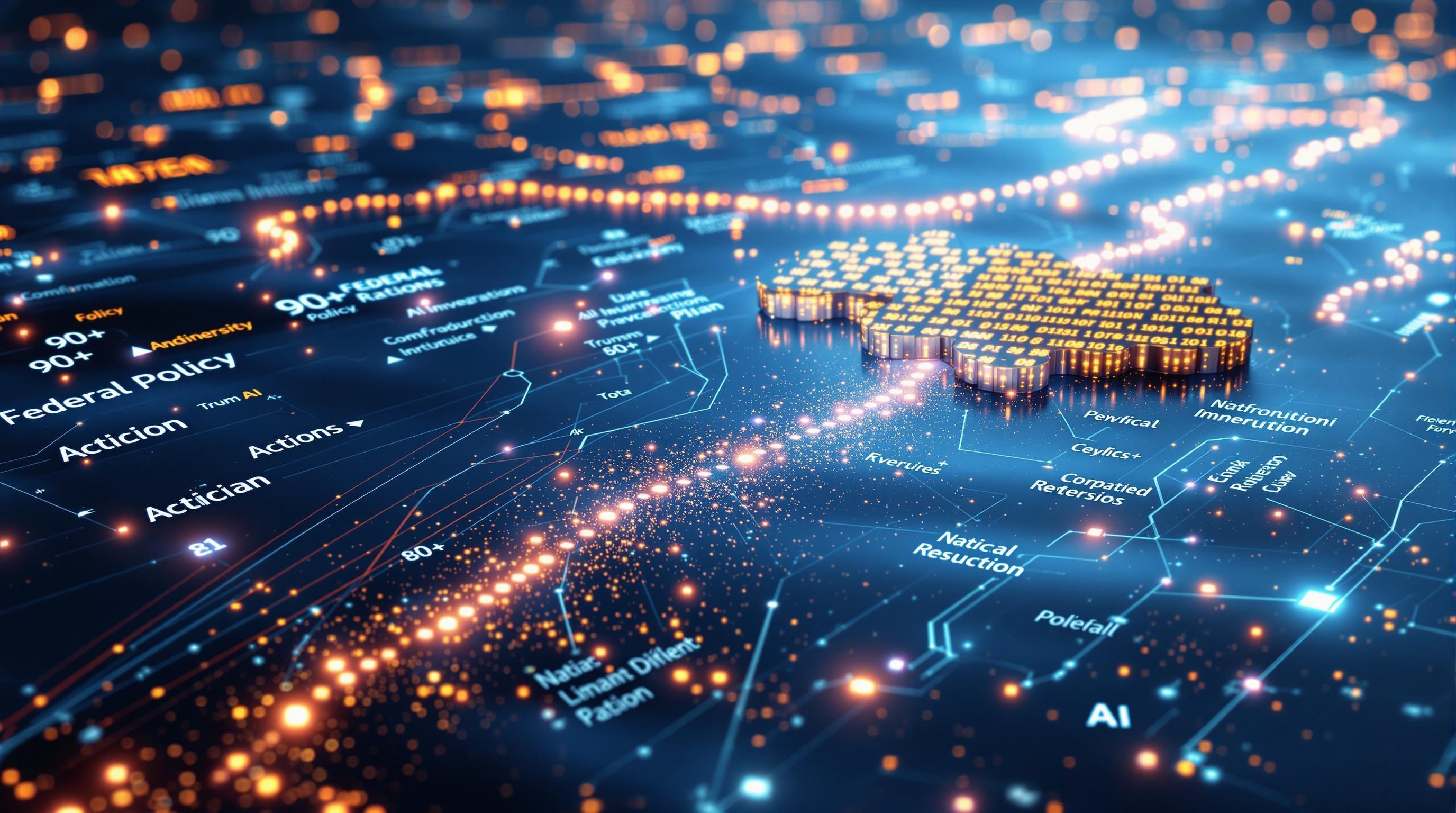
Alibaba's AI Innovations: From Smart Cockpits to AI Glasses
The AI landscape is constantly evolving, and tech giants are pushing the boundaries of what's possible. At WAIC 2025, Alibaba demonstrated its commitment to AI innovation with a range of cutting-edge applications. These innovations span across industries, promising to reshape how we interact with technology in our daily lives.
Next-Gen AI Cockpits for Automotive Applications
Alibaba is diving deep into the automotive sector with its next-generation AI cockpits, developed in collaboration with Qualcomm and Banma Network. Imagine a future where your car anticipates your needs, provides seamless navigation, and keeps you entertained, all powered by AI. This collaboration aims to bring that future closer to reality.
These AI cockpits are not just about entertainment; they are about creating a safer, more efficient, and more personalized driving experience.
These advanced systems run on Qualcomm's powerful Snapdragon 8397 platform, ensuring smooth performance and responsiveness. The Snapdragon platform provides the processing power necessary to handle the complex AI algorithms and data streams required for real-time decision-making and user interaction. Here are some of the key features:
Advanced Driver-Assistance Systems (ADAS): The AI cockpits leverage machine learning to enhance ADAS features, providing drivers with improved safety and awareness on the road.
Personalized User Experience: AI adapts the in-car experience to the driver's preferences, from adjusting seat settings to curating music playlists.
Real-Time Navigation: AI-powered navigation provides up-to-date traffic information and optimized routing, helping drivers avoid congestion and reach their destinations efficiently.
Introducing the Yan AI Assistant
At the heart of Alibaba's AI cockpit is the Yan AI assistant, designed to interact seamlessly with both drivers and passengers. Think of Yan as your personal co-pilot, always ready to assist with a variety of tasks.
Yan utilizes natural language processing (NLP) to understand and respond to voice commands, making it easy to control various vehicle functions. Here’s a glimpse of what Yan can do:
Voice-Activated Controls: Adjust the temperature, change the music, or make a phone call, all with simple voice commands.
Intelligent Recommendations: Receive personalized recommendations for restaurants, points of interest, and nearby services based on your location and preferences.
Context-Aware Assistance: Yan can provide relevant information based on the current driving conditions, such as suggesting a rest stop on a long journey.
Quark AI Glasses: Qwen-Powered Wearable AI
Alibaba is also venturing into the realm of wearable technology with its Quark AI Glasses. These smart glasses are powered by Qwen, Alibaba's large language model (LLM), and are set to launch in China by the end of 2025. Imagine having the power of a sophisticated AI assistant right on your face, providing information and assistance hands-free.
The Quark AI Glasses represent a significant step forward in wearable AI, offering a blend of convenience and functionality. Some potential use cases include:
Real-Time Translation: Translate conversations in real-time, breaking down language barriers and facilitating seamless communication.
Augmented Reality (AR) Navigation: Overlay navigation directions onto your field of vision, making it easier to find your way in unfamiliar environments.
Information Retrieval: Access information from the internet with simple voice commands, allowing you to answer questions and gather data on the go.
Alibaba's commitment to pushing the boundaries of AI is evident in these innovative applications. From AI-powered cockpits to smart glasses, the company is shaping the future of how we interact with technology. It will be interesting to observe how these technologies evolve and impact various industries in the coming years. You can stay up-to-date with the latest developments in AI by visiting our AI News section.

Trump Administration's AI Action Plan: Winning the AI Race
Just when you thought the AI landscape couldn't get any more dynamic, the Trump administration dropped a bombshell with its "Winning the AI Race: America's AI Action Plan." It's a bold move signaling that the U.S. intends to not just participate, but dominate the burgeoning AI revolution.
Unveiling America's AI Action Plan
This isn't just a policy paper; it's a declaration of intent. The White House's detailed plan outlines over 90 federal policy actions, strategically designed to secure America's leadership in artificial intelligence. Think of it as a meticulously crafted game plan, aiming to outmaneuver global competitors and harness the transformative power of AI for economic and strategic advantage. The plan is structured around three core pillars, each designed to reinforce the others:
Accelerating AI Innovation: The goal here is to foster a fertile ground for AI research and development, encouraging breakthroughs and ensuring that American companies remain at the cutting edge. It's about sparking a Cambrian explosion of AI innovation, from basic research to real-world applications.
Building American AI Infrastructure: Recognizing that AI innovation requires robust infrastructure, this pillar focuses on creating the necessary digital backbone, including data centers, high-performance computing resources, and advanced communication networks.
Leading in International Diplomacy and Security: This pillar acknowledges the global implications of AI, emphasizing the need for international cooperation on standards, ethics, and security. It's about shaping the global AI landscape in a way that aligns with American values and interests. You can stay updated on the latest global trends and policy changes through our AI News section.
Policy Actions: A Closer Look
So, what does this action plan actually do? It's not just about grand pronouncements; it's about concrete actions. Here are a few key policies that caught our attention:
Exporting American AI: The plan envisions aggressively promoting the export of American AI technologies, aiming to establish U.S. AI as the global standard. This is akin to exporting not just products, but an entire technological ecosystem.
Promoting Data Center Buildout: Recognizing the critical role of data centers in AI development, the plan seeks to incentivize the construction of new data centers across the country. Think of these data centers as the engine rooms of the AI revolution, providing the computational power needed to train and deploy AI models.
Removing Hindering Regulations: The plan aims to identify and eliminate regulations that stifle AI innovation, creating a more streamlined and business-friendly environment. It's about clearing the path for AI development, removing unnecessary roadblocks, and fostering a spirit of experimentation.
Ensuring Ideological Neutrality in Frontier Models
One of the more intriguing aspects of the plan is its focus on ensuring that frontier AI models are free from ideological bias. In an era where AI is increasingly shaping our perceptions and beliefs, the concern is that biased AI could perpetuate and amplify existing societal inequalities. This focus is particularly relevant, given the growing discussion around the ethics of AI and the potential for AI to be used for malicious purposes. Tools like GPTZero, an AI detector, can help identify AI-generated content and combat the spread of misinformation.
The Trump administration's AI action plan is a bold attempt to secure America's leadership in the AI race. Whether it succeeds remains to be seen, but it undoubtedly sets the stage for an intense period of innovation, competition, and transformation.
This comprehensive plan signals a clear intention: the U.S. wants to lead the world in AI, not just technologically but also ethically and strategically. It's a high-stakes game, and the Trump administration is clearly playing to win. This AI Action plan is likely to have effects on the use of ChatGPT, a popular AI tool used for many applications. With its blend of innovation incentives, infrastructure investments, and international engagement, the plan aims to shape the future of AI in a way that benefits the United States and aligns with its values. The next section will explore the growing competition for AI talent and the strategies companies are employing to attract and retain the best minds in the field.
EU AI Act: New Guidelines and Implementation Progress
The regulatory landscape of AI is rapidly evolving, and the EU is at the forefront of these changes. In July 2025, significant strides have been made in clarifying and implementing the landmark EU AI Act, setting a global precedent for AI governance. These guidelines aim to foster innovation while safeguarding fundamental rights and ethical principles. Let’s dive into the specifics of these developments.
European Commission's Guidance for General-Purpose AI
The European Commission has officially released comprehensive guidelines tailored for providers of general-purpose AI models. These guidelines serve as a crucial compass, illuminating the path to compliance with the AI Act. They offer detailed interpretations of the Act's requirements, ensuring that companies understand their responsibilities. Think of it as an instruction manual that translates the complex legal text into actionable steps. These guidelines address key aspects such as risk management, data governance, transparency obligations, and conformity assessment procedures.
Clarifying Obligations Under the AI Act
The AI Act introduces a tiered approach to regulating AI, based on the level of risk associated with different applications. The guidelines meticulously clarify these risk categories and the corresponding obligations for AI providers. For example, high-risk AI systems, such as those used in critical infrastructure or healthcare, are subject to stringent requirements, including rigorous testing, human oversight, and cybersecurity measures. These systems must demonstrate that they are safe, reliable, and non-discriminatory before they can be deployed in the EU market. To stay updated on the latest regulatory changes, following publications like AI News is essential.
Banning 'Unacceptable Risk' AI Systems
A core tenet of the AI Act is the prohibition of AI systems deemed to pose an "unacceptable risk" to fundamental rights. Since February 2025, these systems have been officially banned within the EU. This category includes AI applications that manipulate human behavior, enable indiscriminate surveillance, or exploit vulnerabilities of specific groups. Facial recognition systems used for mass surveillance, for example, fall squarely into this prohibited category. By setting a firm line against these harmful applications, the EU is sending a clear message that AI innovation must not come at the expense of individual liberties and societal well-being.
The Imperative of AI Literacy
The effective implementation of the AI Act hinges on a workforce that is not only skilled in AI development but also deeply aware of its ethical and legal implications. The EU emphasizes that organizations must prioritize AI literacy among their staff. This means providing training and resources to ensure that employees understand the principles of responsible AI development, deployment, and use.
AI literacy is not just about understanding algorithms; it's about fostering a culture of ethical awareness and accountability.
For example, consider a marketing team using HubSpot Email Writer, an AI-powered email marketing tool. The team needs to understand how the AI generates content and ensure the generated material doesn't infringe on privacy rights or spread misinformation. This proactive approach is crucial for building trust and confidence in AI systems.
Streamlining Compliance with Data Summaries
To promote transparency and facilitate compliance, the European Commission has introduced templates for AI model providers to summarize their training data usage. These templates require providers to document the sources, characteristics, and potential biases present in their training datasets. By providing a clear and concise overview of the data used to train AI models, these summaries enable regulators and stakeholders to assess the fairness, accuracy, and robustness of these systems. This initiative marks a significant step toward greater accountability and trustworthiness in the AI ecosystem.
Looking Ahead: Full Compliance by August 2026
While significant progress has been made, the journey toward full compliance with the AI Act is ongoing. The EU has set a deadline of August 2026 for organizations to fully align their AI systems with the Act's requirements. This timeline provides a clear incentive for companies to take proactive steps to address any gaps in their compliance programs. As the deadline approaches, businesses will need to invest in the necessary resources, expertise, and infrastructure to ensure that their AI systems meet the highest standards of safety, ethics, and transparency. Understanding these nuances could be enhanced by delving into resources about AI Fundamentals.
The EU's commitment to responsible AI innovation is clear. As the AI landscape continues to evolve, staying informed and adaptable will be key for any organization operating within or interacting with the European market. The AI Glossary on our site is a great place to define unfamiliar terms and concepts related to compliance.
Meta's AI Talent Grab: $100M+ Packages and a Superintelligence Focus
The race for AI dominance isn't just about algorithms and compute power; it's about the brilliant minds that drive innovation, and Meta is playing to win with a bold talent acquisition strategy. Meta is aggressively pursuing top AI talent, reportedly offering compensation packages exceeding $100 million to lure experts to its ranks.
The Allure of Meta's AI Vision
These lucrative offers signal Meta's unwavering commitment to becoming a leader in the AI space, specifically with a focus on achieving superintelligence – AI that surpasses human cognitive abilities. The company is not just building tools; it's assembling a dream team to redefine what's possible with artificial intelligence. This approach, while costly, reflects a belief that the right people are the key to unlocking the next level of AI innovation.
Shengjia Zhao: Leading the Charge at Superintelligence Labs
A prime example of Meta's talent acquisition is the appointment of Shengjia Zhao, formerly a key researcher at OpenAI, as the chief scientist for Meta's Superintelligence Labs. Zhao's expertise and experience in cutting-edge AI research make him a valuable asset as Meta pushes the boundaries of what AI can achieve.
Scale AI Investment and Alexandr Wang's Role
Beyond individual hires, Meta is making strategic investments in companies that can fuel its AI ambitions. The company's substantial $14.3 billion investment in Scale AI, a data infrastructure provider critical for AI model training, highlights this approach. Further solidifying the relationship, Alexandr Wang, the CEO of Scale AI, is reportedly joining Meta to spearhead its superintelligence initiative. This move is a powerful statement about Meta's ambition to not just participate in the AI revolution, but to lead it.
Aiming for Superintelligence: A Bold Strategy
Meta's strategy is clearly focused on building AI that goes beyond simply automating tasks or improving existing processes. The goal is to create AI with capabilities that exceed human intelligence, opening up possibilities we can only begin to imagine. This ambitious vision requires not only significant financial investment but also the best and brightest minds in the field.
Meta's talent acquisitions, particularly in securing figures like Shengjia Zhao and Alexandr Wang, underscore a strategic commitment to pushing the boundaries of AI and achieving superintelligence.
Meta's aggressive pursuit of top AI talent, coupled with strategic investments and a clear focus on superintelligence, positions the company as a major player in the unfolding AI revolution. This all occurs as AI continues to dominate AI News headlines. As Meta doubles down on AI, it's worth keeping an eye on how it will impact the competitive landscape, especially in comparison to other major players such as Google Gemini and ChatGPT.
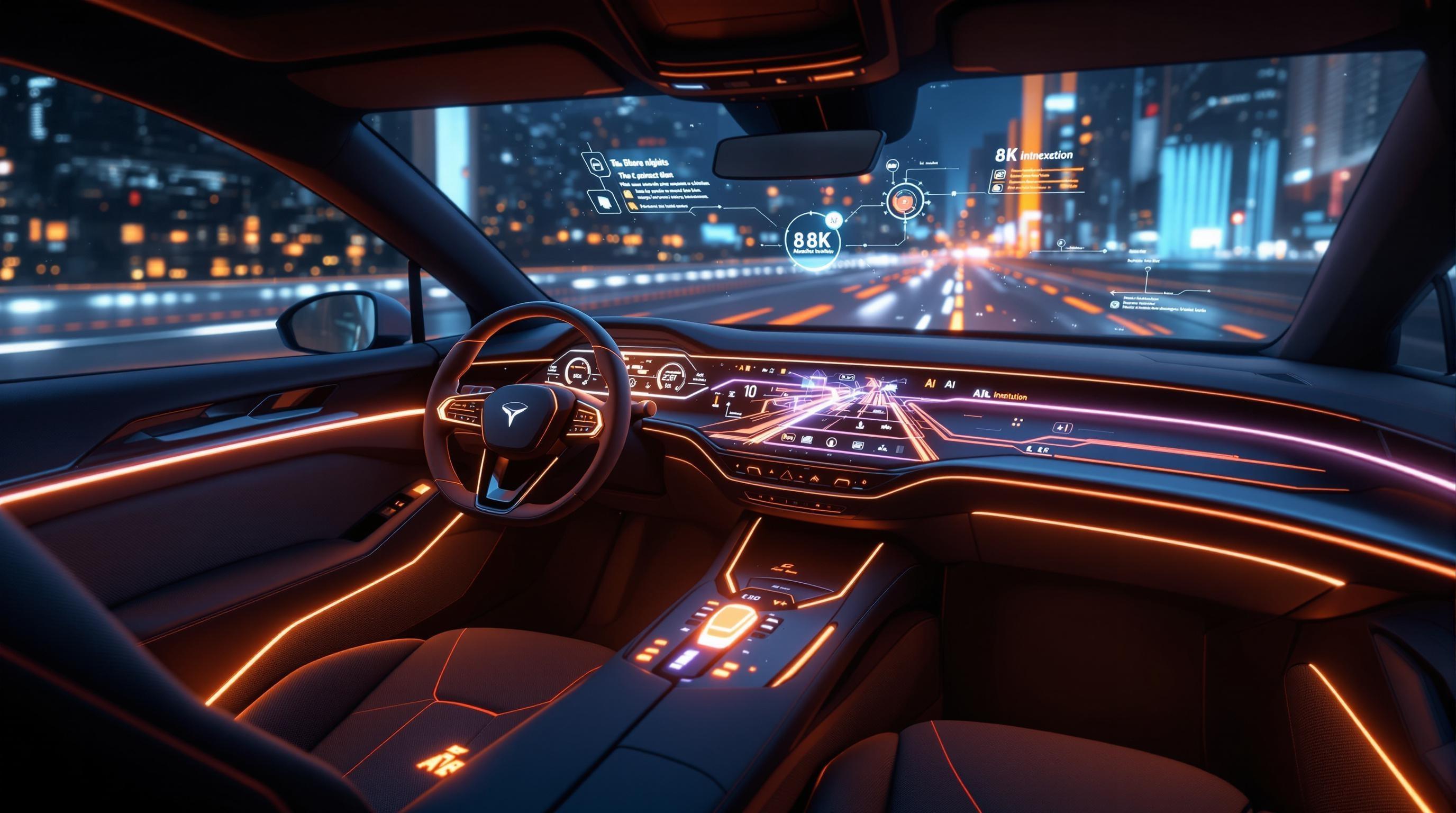
Tesla and xAI's Massive Computing Expansion: A $30 Trillion Vision
The AI race isn't just about algorithms; it's about raw computational power, and no one seems to be scaling up quite like Tesla and xAI.
A Computing Colossus Takes Shape
Tesla and xAI are currently in the midst of deploying a staggering 550,000 GPUs to fuel their AI endeavors. That's not just a number; it's a testament to their commitment to dominating the AI landscape. To put it in perspective, imagine a city-sized data center humming with the power of half a million high-end graphics cards, all dedicated to training advanced AI models. This massive deployment underscores the insatiable appetite of modern AI for processing power. The models behind tools like ChatGPT, the revolutionary chatbot from OpenAI, and even the image generation capabilities of something like Midjourney, which is known for its artistic and photorealistic outputs, demand immense computational resources.
Speeding Ahead: 10x Faster Installation
What's even more impressive than the sheer scale is the speed at which they're installing this infrastructure. The current installation pace is reportedly 10 times faster than last year. This isn't just incremental improvement; it's a quantum leap. To visualize it, imagine building a skyscraper. Last year, you were adding one floor per month. This year, you're adding ten. This accelerated pace allows Tesla and xAI to iterate faster on their AI models, train larger and more complex networks, and ultimately gain a competitive edge in the rapidly evolving AI market. Keeping up with the latest advancements in AI News requires this kind of agility.
Samsung's $16.5 Billion Chip Deal
To power this computational expansion, Tesla has secured a major deal with Samsung. Samsung will produce Tesla's next-generation AI6 chips in a contract valued at a massive $16.5 billion. This partnership signifies a strategic move by Tesla to control its hardware destiny and optimize chip design specifically for its AI workloads. Securing a dedicated supply of cutting-edge chips is crucial in an era where access to computing resources can be a major bottleneck. It's like having your own private oil well in the middle of an energy crisis.
Musk's Vision: AI, Robotics, and Energy
Elon Musk has been vocal about his vision for Tesla's future, which extends far beyond electric vehicles. He sees Tesla as a company fundamentally driven by AI, robotics, and energy. The massive computing build-out is a direct investment in this vision. AI will power Tesla's autonomous driving capabilities, optimize energy management systems, and, most importantly, drive the development of advanced robots like Optimus.
The Trillion-Dollar Robot Dream
Speaking of Optimus, its potential success is what truly excites investors and analysts. Musk believes that if Optimus achieves its potential, Tesla could be valued at $20-30 trillion. That's not a typo. Trillions. The rationale is simple: a general-purpose humanoid robot capable of performing a wide range of tasks could revolutionize industries from manufacturing to logistics to elder care. If Tesla cracks the code on truly useful and affordable humanoid robots, the economic implications would be enormous. This long-tail vision helps to explain the sheer scale of investment into AI and computing infrastructure. Furthermore, this ambition may require the use of Prompt Engineering to achieve the desired output from the Optimus robots.
The combined power of Tesla's AI investments, the Samsung chip deal, and the audacious vision for Optimus, creates a narrative of unprecedented ambition and potential disruption. It's a high-stakes gamble, but if it pays off, Tesla and xAI could reshape the future of technology and industry.
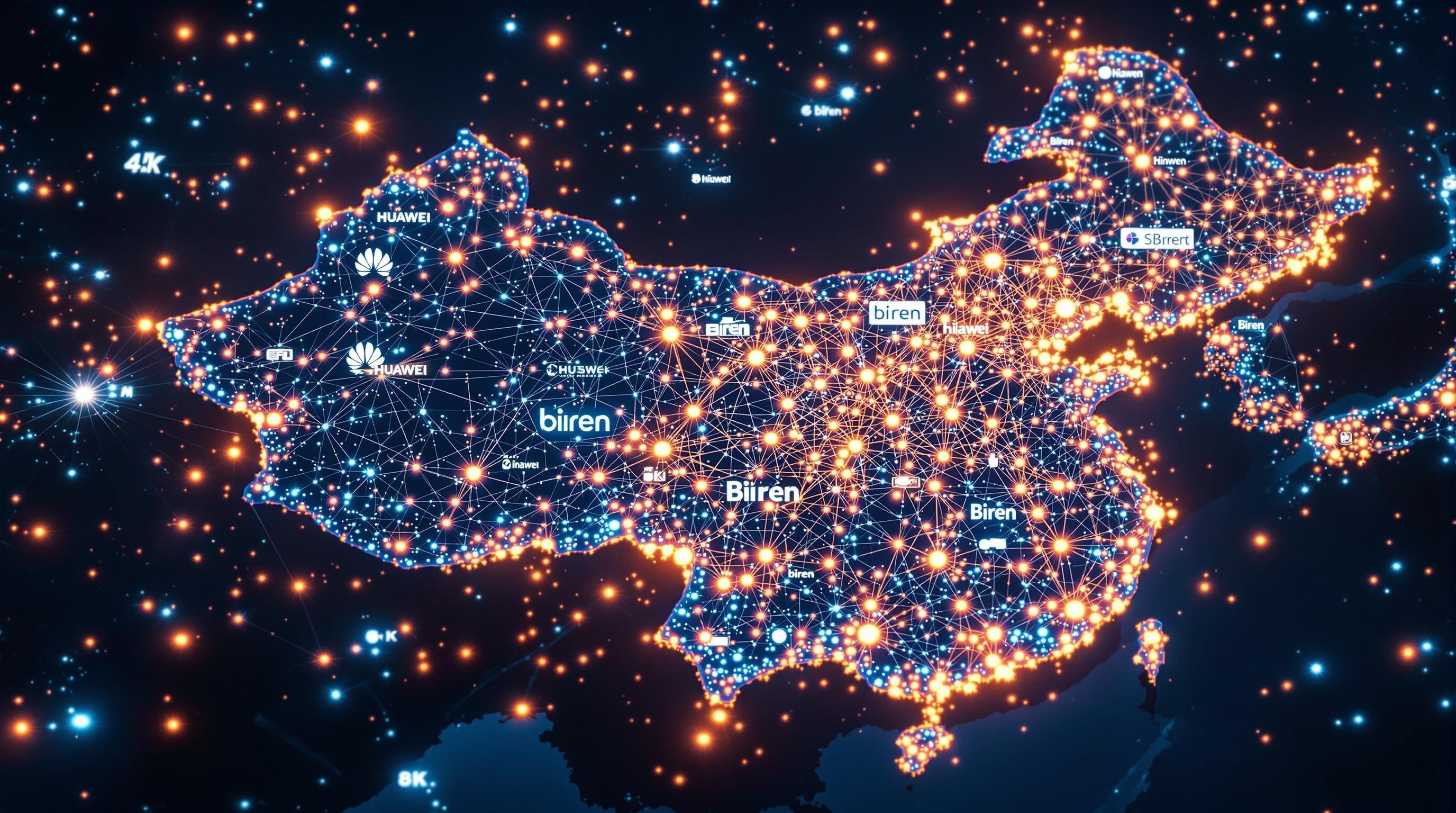
ByteDance's GR-3 Robot: AI-Powered Household Automation
The home of the future might just be powered by AI, and ByteDance is throwing its hat into the ring with a fascinating new development.
ByteDance's GR-3: A Robot Revolution in Your Living Room
ByteDance, the company behind TikTok, has unveiled GR-3, a robot powered by a cutting-edge vision-language-action model. Think of it as a brain that allows the robot to "see," "understand," and "act" in the real world based on language instructions. This isn't just about pre-programmed movements; it's about genuine understanding and adaptation, bringing us closer to truly intelligent robots capable of assisting with daily life.
GR-3 represents a significant step towards robots that can truly understand and respond to human needs in a dynamic environment.
Natural Language Control: Teaching Robots to Understand You
One of the most exciting aspects of GR-3 is its ability to follow natural language instructions. Forget complex coding or button-mashing – you can simply tell GR-3 what you want it to do, and it will (hopefully!) understand and execute the task. This ease of use is crucial for making robots accessible to a wider audience and integrating them seamlessly into our lives. Instead of needing to know the specific sequence of operations, you can interact with it the same way you would instruct a human. This is a game-changer in the field of robotics.
ByteMini Integration: A Glimpse of the Future
The GR-3 system is integrated with the ByteMini robot, acting as the physical embodiment of ByteDance's AI innovation. The ByteMini robot, in conjunction with the GR-3 system, is not just a prototype, but a proof-of-concept showcasing the potential of AI-driven household automation. It's the hardware that brings the AI to life, demonstrating how these advanced algorithms can translate into real-world actions.
Real-World Tasks: From Laundry to Cleaning
So, what can GR-3 actually do? ByteDance's demos show the robot performing a variety of household tasks, including:
Inserting hangers into shirts with surprising dexterity.
Cleaning tables, demonstrating its ability to navigate and interact with surfaces.
Identifying different objects, showcasing its advanced computer vision capabilities.
These seemingly simple actions highlight the underlying complexity of the AI at work. Recognizing different types of clothing, understanding the proper way to insert a hanger, and applying the right amount of pressure to wipe a table clean all require a sophisticated understanding of the physical world. These are the building blocks for more complex and helpful robotic assistants. For example, this work shares conceptual similiarities with DeepMind AlphaFold.
Expanding the Team: ByteDance's Investment in Robotics
ByteDance isn't just dabbling in robotics; they're making a serious investment. Their Seed department, responsible for this and other innovative projects, is expanding rapidly, now boasting over 300 employees. This expansion signifies ByteDance's commitment to long-term AI research and development. As competition in the AI space intensifies, particularly around AI News, companies are ramping up their talent acquisition strategies.
ByteDance's GR-3 robot represents a bold step towards a future where AI-powered robots are commonplace in our homes. While challenges remain in terms of cost, reliability, and safety, these early advancements offer a tantalizing glimpse of the possibilities.
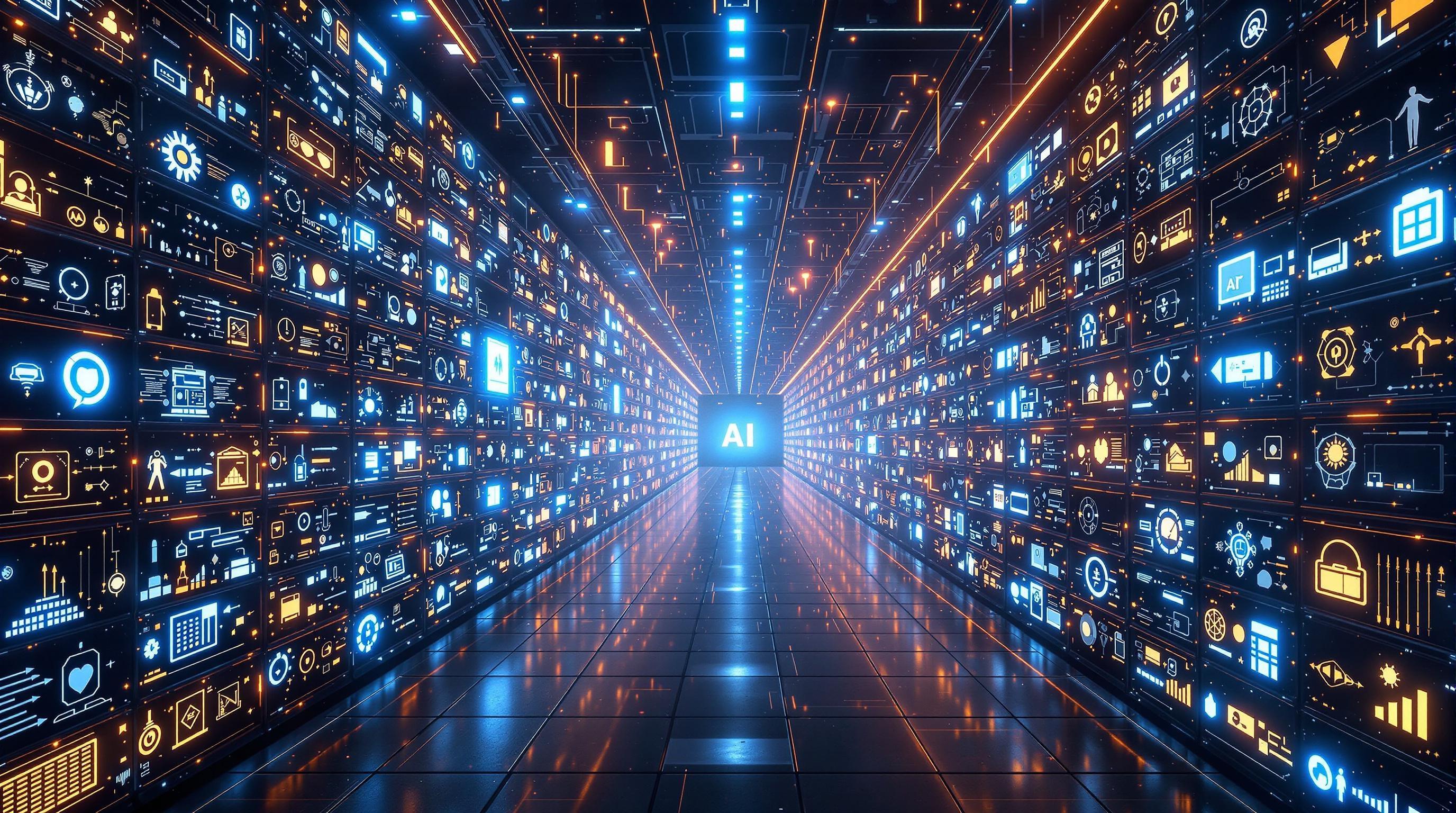
Microsoft's AI Achieves Medical Diagnosis Breakthrough
Just as the tech world was digesting the news of potential mega-deals and shifting alliances, Microsoft quietly unveiled a game-changer in healthcare: the AI Diagnostic Orchestrator (MAI-DxO). This development underscores how deeply AI is penetrating various sectors, promising to reshape industries and redefine what's possible. Let's dive into how this AI is changing the landscape of medical diagnosis.
The AI Diagnostic Orchestrator (MAI-DxO) Arrives
Microsoft's AI Diagnostic Orchestrator, or MAI-DxO for short, is not just another algorithm; it's a meticulously crafted AI system designed to tackle the complexities of medical diagnosis. Think of it as a super-powered medical detective, capable of sifting through mountains of data to pinpoint the most likely cause of a patient's ailment. In an era where data is abundant but human attention is limited, such a tool could be transformative.
Accuracy That Raises Eyebrows
The initial results from MAI-DxO are nothing short of astonishing. In a rigorous trial using case proceedings from the prestigious New England Journal of Medicine, the AI achieved an accuracy rate exceeding 85%. To put that in perspective, this level of precision significantly outstrips the diagnostic capabilities of experienced physicians. It's a bold claim, but the numbers speak for themselves. This achievement not only highlights the raw power of AI but also its potential to augment and enhance human expertise, potentially reducing diagnostic errors and improving patient outcomes. Want to learn more about AI, consider checking out our AI Fundamentals guide.
Beating the Experts
What's truly remarkable is that MAI-DxO's accuracy was more than four times higher than that of seasoned doctors when faced with the same diagnostic puzzles.
Imagine a scenario where a team of the best doctors in the world are presented with a challenging case. Now, imagine an AI that can analyze the same data and arrive at the correct diagnosis with far greater consistency. This isn't about replacing doctors; it's about providing them with a tool that can help them make more informed decisions, faster. It’s a force multiplier, allowing medical professionals to focus on the human aspects of care while AI handles the heavy lifting of data analysis.
Addressing Complex Diagnostic Challenges
Diagnosing medical conditions is often a complex, multi-faceted challenge. Symptoms can be vague, test results can be ambiguous, and the sheer volume of medical knowledge can be overwhelming. MAI-DxO excels in this environment because it can process vast amounts of information without fatigue or bias. It can identify patterns and connections that might be missed by even the most experienced human eyes. This is especially crucial in diagnosing rare or complex conditions, where early and accurate detection can make all the difference. Perhaps you should also consider reading our AI News section to stay up to date on the latest developments in AI.
The Cost-Effectiveness Factor
Beyond accuracy, the cost-effectiveness of AI-driven diagnosis is another compelling argument. Traditional physician-based diagnosis can be expensive, time-consuming, and subject to human error. MAI-DxO offers a potentially cheaper and more efficient alternative, capable of analyzing data and providing diagnostic insights at scale. This could be particularly beneficial in underserved communities where access to specialized medical expertise is limited. While the initial investment in AI infrastructure may be significant, the long-term cost savings could be substantial. For those interested in the financial side of AI, you might want to explore AI affiliate marketing.
With the introduction of MAI-DxO, Microsoft has not only demonstrated the potential of AI in healthcare but has also set a new benchmark for diagnostic accuracy and efficiency. As AI continues to evolve, we can expect to see even more innovative applications that transform the way we approach medical care, ultimately leading to better outcomes for patients around the world. This is just the beginning of a revolution in medical diagnostics, and the implications are profound.

DeepSeek Disrupts AI Investment Assumptions with Low-Cost R1 Model
The AI landscape is constantly shifting, and recent developments have challenged long-held assumptions about the resources required to build powerful models. One of the most notable examples is DeepSeek's R1 model, which has disrupted conventional wisdom about AI development costs. This development also raises questions about US competitiveness in this space, which we cover in AI News.
The R1 Model's Cost-Effectiveness
The DeepSeek R1 model stands out because it was built with significantly fewer resources than many of its competitors. While other leading AI models require investments in the hundreds of millions, or even billions, of dollars for computing infrastructure, DeepSeek achieved a comparable level of performance with less than $6 million in computing resources. This is a fraction of what companies like OpenAI and Google typically spend.
This cost-effectiveness isn't just a minor detail; it's a game-changer. It suggests that cutting-edge AI development doesn't necessarily require massive capital outlays, opening the door for smaller players and more agile innovation.
This feat underscores the potential for alternative approaches to AI development, focusing on algorithmic efficiency, data optimization, and smart engineering. DeepSeek's approach demonstrates that innovation isn't always about throwing more money at the problem but rather about finding innovative solutions.
Trump's "Wake-Up Call" and the Implications for US Industry
The implications of DeepSeek's achievement haven't gone unnoticed by political and industry leaders. Former President Trump reportedly called the R1 model a "wake-up call" for US industry, emphasizing the need for increased competitiveness and strategic investment in AI. Trump might even consider using AI tools like HubSpot Email Writer to help with his communications.
Competitiveness: The R1 model shows that other countries can deliver high-quality AI with much less investment, and it has sparked concern in the US about its ability to compete. US companies need to think strategically about AI development.
Strategic Investment: Trump has suggested that the US government needs to do more to incentivize AI development, including providing funding for research and development and creating a more favorable regulatory environment.
Innovation: The R1 model is an example of innovation in the AI space. It is essential for the US to encourage companies to innovate and find new ways to develop AI technologies.
This "wake-up call" highlights a critical juncture for the US AI industry. It’s not just about matching the investment of other countries but about fostering a culture of innovation, optimizing resource utilization, and developing unique approaches to AI development. The US needs to consider ways to stay competitive, and that includes potentially building its own AI tools. Some popular choices include Google Cloud AI and Azure Machine Learning.
The Broader Impact on the AI Landscape
DeepSeek's success has broader implications for the entire AI landscape. It demonstrates that:
Lower barriers to entry: The lower costs of AI development make it possible for startups to enter the space.
New AI architectures: The success of the R1 model could encourage the development of new AI architectures and algorithms.
Increased competition: This development is likely to lead to increased competition in the AI market, resulting in faster innovation.
The R1 model is a testament to the power of focused innovation and efficient resource management. It challenges the notion that AI breakthroughs are solely the domain of deep-pocketed corporations and paves the way for a more diverse and dynamic AI ecosystem. The achievement of DeepSeek is an important lesson that should be carefully considered by all stakeholders in the field. As AI continues to evolve, approaches like these will become increasingly vital for driving progress and ensuring a competitive and inclusive future. For more on trends in AI, see our Top 100 AI Tools.

The AI Talent War: Tech Giants Battle for Top Researchers
The race to dominate the AI landscape has intensified the battle for the brightest minds, leading to an all-out talent war among tech giants.
Nine-Figure Compensation Packages: A New Normal?
The competition for top AI researchers has reached unprecedented levels. The demand is so high, in fact, that companies are reportedly offering nine-figure compensation packages to lure leading experts. We're not just talking about stock options and signing bonuses; some packages include substantial base salaries, guaranteed research funding, and even a degree of autonomy over project direction. This extreme level of investment underscores the belief that the future of these companies hinges on their ability to attract and retain top-tier AI talent. This level of financial commitment signals that companies view AI not merely as a promising technology, but as the key to future economic dominance. These packages are designed to not only attract but also to incentivize long-term commitment, ensuring that these brilliant minds remain focused on driving innovation for years to come.
Google Under Scrutiny: Can They Keep Up?
With these astronomical figures being thrown around, Google, traditionally an AI powerhouse, faced increasing questions about its position in the AI talent race. While Google possesses significant resources and a long history of AI innovation, including Google AI Studio, a platform designed for building and deploying AI models, some analysts worried that it might be losing ground to more aggressive players. The internal discussions within Google likely revolve around how to balance fiscal responsibility with the need to compete for the best talent. The company needs to demonstrate that it can still offer a compelling environment for researchers, one that values both cutting-edge work and competitive compensation. Maybe they need to leverage Google Cloud AI more effectively to prove their commitment. Ultimately, Google's response to this talent war will be a critical factor in determining its long-term success in the age of AI. The pressure is on for them to demonstrate that they can remain a top destination for the world's leading AI researchers.
Altman Acknowledges Meta's Recruitment Tactics
Even OpenAI, the company behind ChatGPT, the groundbreaking AI chatbot that has captured the world's attention, isn't immune to the talent war. Sam Altman himself publicly acknowledged Meta's aggressive recruitment tactics. Meta, with its vast resources and ambitious AI goals, has been actively trying to poach top researchers from other companies, including OpenAI. These tactics reportedly involve not just high salaries, but also promises of greater autonomy and access to cutting-edge resources. This acknowledgement from Altman highlights the intensity of the competition and the lengths to which companies are willing to go to secure top AI talent. Meta's strategy reflects a clear understanding that people are the most important factor in driving AI progress. The fact that Altman is openly discussing Meta's actions suggests a level of concern within OpenAI, underscoring the real threat posed by Meta's recruitment efforts. The long-term implications of these recruitment battles could reshape the entire AI landscape. As the talent war rages on, the flow of experts between companies will continue to be a crucial indicator of who is winning the race for AI supremacy. Moreover, if this keeps up, it will be interesting to see what happens in the AI News arena.
🎧 Listen to the Podcast
Hear us discuss this topic in more detail on our latest podcast episode: https://creators.spotify.com/pod/profile/bestaitools/episodes/International-AI-Press-Review---July-28--2025-OpenAI-best-ai-tools-org-e3647r7
Keywords: AI, Artificial Intelligence, Machine Learning, OpenAI, Data Centers, AI Infrastructure, Large Language Models, AI Chips, ChatGPT Agent, AI Regulation, EU AI Act, AI Talent, AI Robotics, AI Medical Diagnosis, AI Investment
Hashtags: #AI #ArtificialIntelligence #MachineLearning #TechNews #AIInnovation
For more AI insights and tool reviews, visit our website https://best-ai-tools.org, and follow us on our social media channels!
Website: https://best-ai-tools.org
X (Twitter): https://x.com/bitautor36935
Instagram: https://www.instagram.com/bestaitoolsorg
Telegram: https://t.me/BestAIToolsCommunity
Medium: https://medium.com/@bitautor.de
Spotify: https://creators.spotify.com/pod/profile/bestaitools
Facebook: https://www.facebook.com/profile.php?id=61577063078524
YouTube: https://www.youtube.com/@BitAutor
Recommended AI tools
Google Cloud Vertex AI
Conversational AI
Unified AI and cloud for every enterprise: models, agents, infrastructure, and scale.
OpenRouter
Conversational AI
The Grid Operator AI Needs
Weights & Biases
Data Analytics
The AI Developer Platform
Contentful
Writing & Translation
Content infrastructure for digital teams
EOS Data Analytics (EOSDA)
Data Analytics
Bringing Space Data Down to Earth
MCP Servers
Code Assistance
Efficient Server Management Solutions

